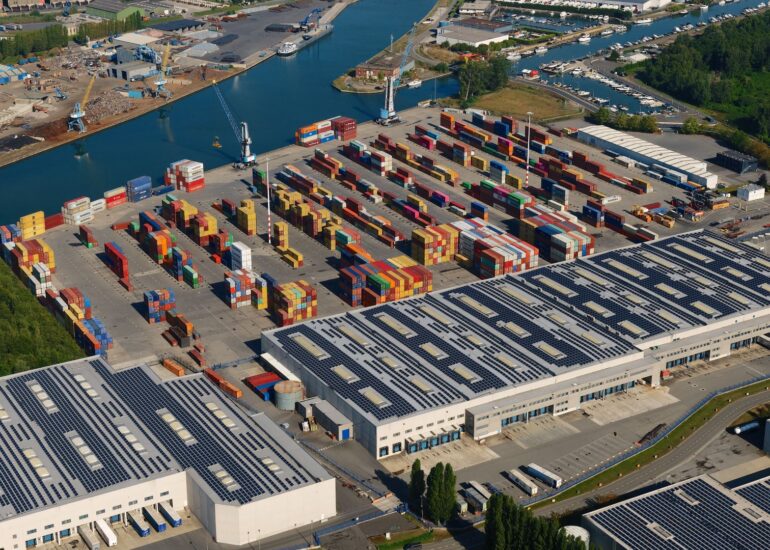
The problem
A chemical manufacturer was looking for a location to consolidate its various goods. The goods were shipped to an inland location via trucks under a T1 transit document. Certain goods could not be stored at the supplier and other flows were still handled externally by social enterprises.
The producer went in search of a new supplier where the various flows could be bundled.
Goals:
Reduced delays and congestion
Use of an inland terminal makes it possible for our customers to improve freight transport efficiency. Containers can be transported quickly from the seaport to the inland waterway terminal, reducing delays and road congestion. The unique location of our distribution centre in Willebroek ensures that there is no longer any need for transport by truck before or after.
Promoting sustainability
By consolidating freight transport and shifting to inland waterway shipping, our customers contribute to reducing their environmental impact. Reducing the number of trucks on the road reduces greenhouse gas emissions and promotes sustainability in the supply chain.
Cost optimisation
The use of an inland waterway terminal allows our customers to save costs on long-distance transport. Instead of running trucks directly between the seaport and the hinterland, the containers can be consolidated and transferred to the inland waterway terminal. After unloading, the goods can be distributed more efficiently between trucks or trains for further transport.
The case study resulted in the following benefits:
1
The high-threshold SEVESO permit of ODTH Willebroek made it possible for the customer to stock its goods from different suppliers under one roof and thus reduce the complexity of its logistics chain.
2
ODTH’s VAS activities made it possible for the customer to carry out its activities in the warehouse and thus avoid transports to and from the social enterprise.
3
The use of ODTH customs permits made it possible for the customer to prepare fewer customs documents and thus reduce costs.
4
Use of the terminal promoted the sustainability of the logistics flow and made the flows reliable. In this way, the fluctuating volumes from week to week can be handled more efficiently without the risk of demurrage and detention charges.
